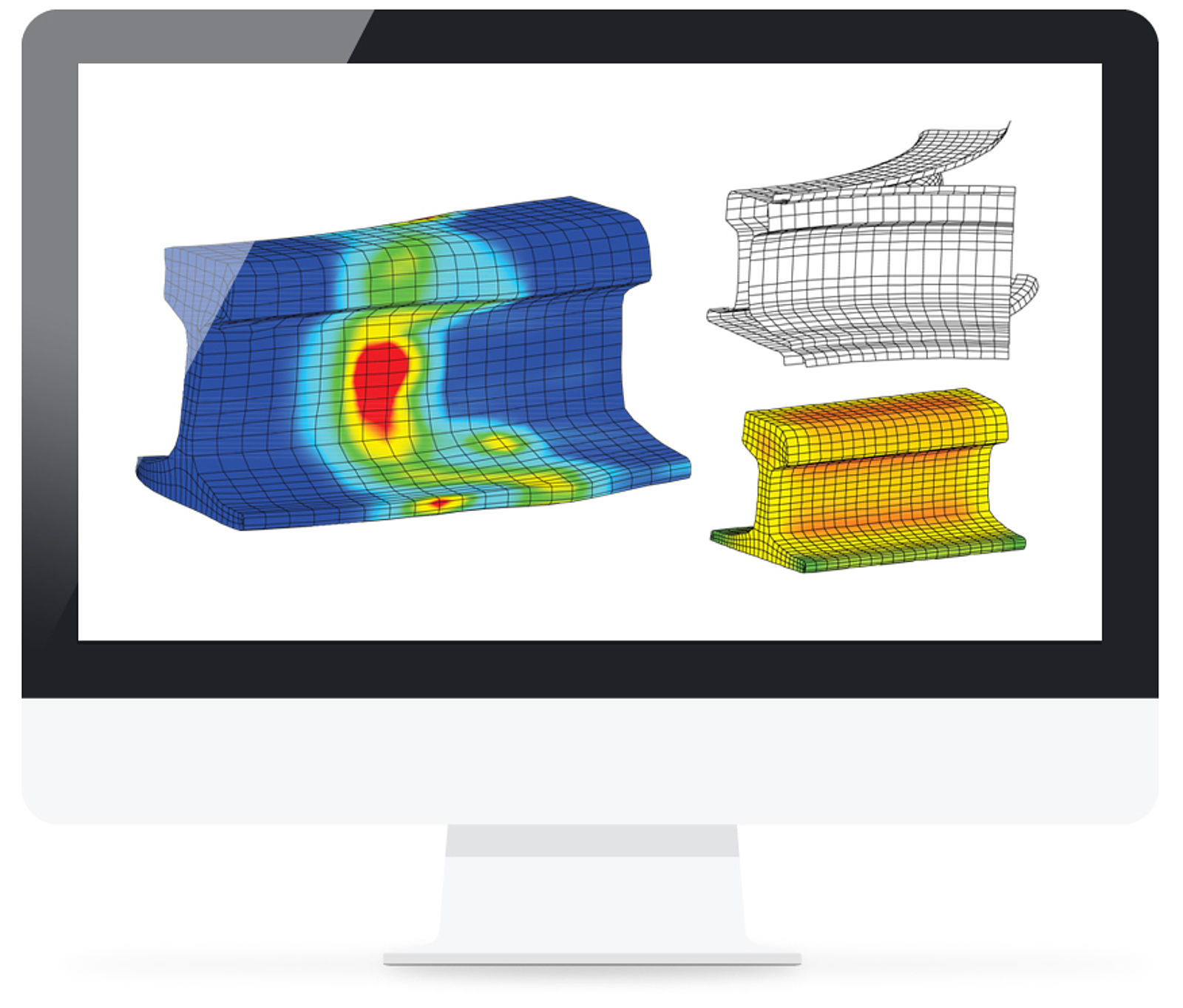LARSTRAN-Shape – A universal modular FEM-Solver
The load carrying capacity of a structure undergoing severe deformation (including plastic strain) can only be determined by using non-linear numerical calculations. For structural analysis of smaller deformations, non-linear calculations may also produce more accurate results than linear calculations. Such calculation methods made some tasks like designing and dimensioning of spring elements with non-linear characteristics possible. Similar calculation methods are also used to analyse sheet-metal forming phenomena and to compute the flow of material while drop forging.
LARSTRAN-Shape is a modular software program, which has been optimised for structural analysis, but can easily be extended to use for other types of problems. It incorporates independent data management with emphasis on the solving of non-linear structural problems.
It can generate solutions for various applications including statics, stability (such as post-buckling behaviour), implicit dynamics, slow viscous flow, non-linear transient heat transfer and thermo-mechanical coupling. New procedures and algorithms for a range of applications are developed in conjunction with scientific institutions and introduced into the program system.
LARSTRAN-Shape is equiped with its own pre/post processing which was especially designed for the simulation of deforming processes.
With all common pre/post processings there are interfaces that convert data to a special format, then re-convert the results after the calculations.
We include many real-life working examples to demonstrate the capabilities of the simulation physics involved.ilities of simulating physical phenomenas.
Algorithms
A simulation is fundamentally an abstraction of the physical processes that are prevalent in testing important criteria such as durability, stability and energy balance.

- linear statics effects
- nonlinear static phenomena, including post-buckling behaviour
- rigid plastic formation
- stationary heat transfer
- non-stationary heat transfer
- linked thermo-mechanical analysis

Large strains and distortion with non-linear parameters may be introduced into an algorithm via various parameters. The algorithm works either with symmetrical or unsymmetrical matrices, as they are typical for non-conservative loads..
These algorithms can access a library containing a large variety of different finite elements..
Nearly all types of elements have elasto-plastic and anisotropic behaviour when undergoing severe strain. Materials with incompressible behaviour use elements with reduced integration. The application for load distribution is determined for all elements, either directly or with the help of special load elements..
The elements all have interfaces that allow the input of general material laws. general material laws.
